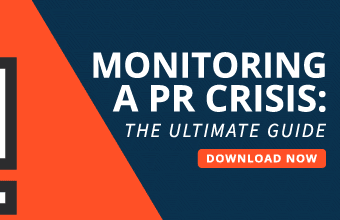In the age of #MeToo, #BlackLivesMatter and heightened social consciousness, the spotlight is brighter than ever on brand reputations. As corporate misconduct like sexual harassment and discrimination continues to make headlines that often trigger reputational crises, new research from risk management firm Consilio reveals companies are becoming increasingly focused on detecting “bad behaviors” so they can be appropriately managed.
According to the firm’s survey, the majority of corporate legal professionals (77 percent) believe their companies have either “somewhat” or “to a great extent” increased investment in resources to detect “bad behaviors” that go against the company’s mission (i.e. discrimination, sexual harassment, fraud, IP theft, etc.).
The survey found that many organizations use more than one approach to facilitate investigations, though most were handled internally through the compliance department (66 percent) or investigations department (45 percent). Twenty eight percent of respondents said their companies facilitate investigations externally through a law firm, followed by investigations facilitated via consultants (16 percent).
“Bad behavior” detection challenges
“Compliance departments that are running most internal investigations often are better equipped to detect financial vs. non-financial corporate misconduct such as fraud or embezzlement,” said Roger Miller, managing director at Consilio, in a news release. “In our experience, technology used by compliance departments largely relies on simple keyword and/or number-based searches. However, detection of non-financial wrongdoing at companies through digital communications like email, IM, and text is opaque and often requires more sophisticated technology, such as contextual analytics1 to identify.”
Miller went on to comment, “In a hypothetical keyword search to detect the occurrence of bribery in a company, contextual analytics provide the ability to search for the definition of the word ‘bribe’ or use its legal definition in the FCPA and/or UK Bribery Act. This technology allows investigators to identify incriminating document(s) even if a bad actor is trying to obfuscate their misconduct.”
Respondents cited fraud (72 percent) among the most common types of investigations at their company, to their knowledge. This was followed by non-financial “bad behaviors” including: discrimination (60 percent), IP theft (52 percent), and sexual harassment (51 percent). The least common investigations cited were tied to antitrust/pricing fixing (42 percent) and the FCPA/UK Bribery Act (29 percent).
“Traditionally, compliance departments are designed to monitor, train, and implement compliance mandates and company policy,” said Miller. “However, they often have outdated technology that isn’t well designed to detect behavioral workplace misconduct, like discrimination or sexual harassment, the latter of which is being reported more often in light of the #MeToo movement. Having the right technology in place is critical for organizations to broaden the types of workplace wrongdoing they are able to detect.”
Proactive vs. reactive approach in identifying “bad behaviors”
Sixty-two percent of legal pros said that they are very confident their company is proactively identifying “bad behaviors” that go against the company’s mission. Further, when asked whether their company has existing policies and/or technology, such as financial or behavioral audits and communication monitoring, to identify high risk behavior in employees, an overwhelming majority (74 percent) said these measures are in place.
For internal investigations, the difference between proactively and reactively detecting corporate misconduct can be monumental. A reactive approach carries the risk of significant reputational, legal, and financial damage if appropriate investigative resources—including staff and technology—are not deployed quickly to determine if any alleged wrongdoing is occurring. Corporations that can proactively identify high risk behavior are better positioned to minimize corporate misconduct, improve employee morale, and improve the company’s bottom line.
“While the survey suggests that companies are equipped to proactively identify corporate misconduct, there is still room for improvement,” said Miller. “Contextual analysis technology is still in early adoption stages among many Fortune 500 companies. With this advanced technology, companies have the ability to pinpoint behavioral red flags and be empowered to more effectively identify, manage, and mitigate ‘bad behavior’ before it escalates.”
The survey of 138 legal professionals from in-house law departments, law firms, and government affiliated entities, was conducted from January 29–30, 2019 by Consilio at the Legalweek conference.









